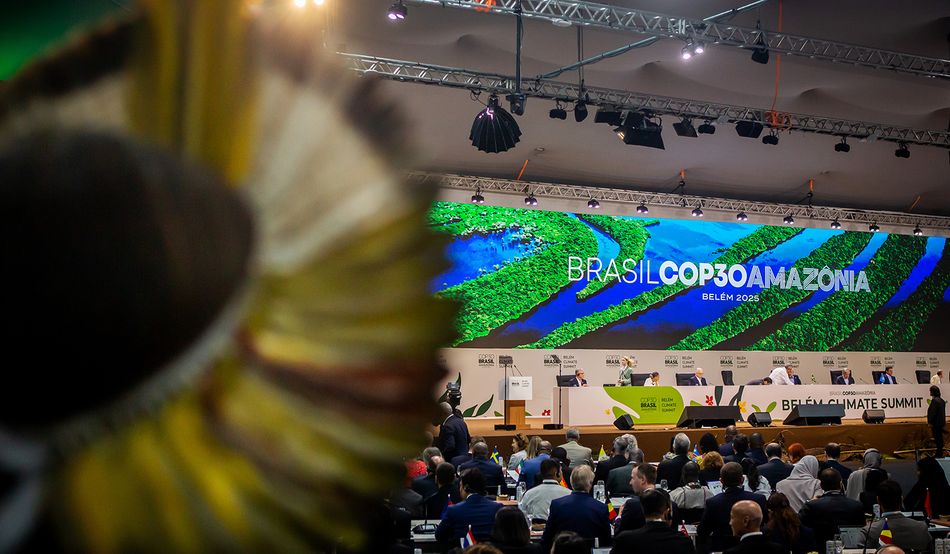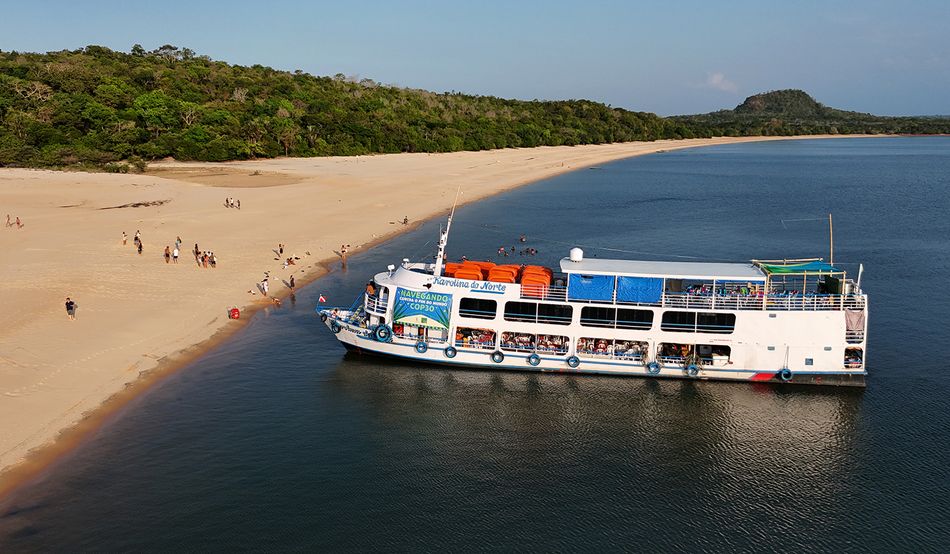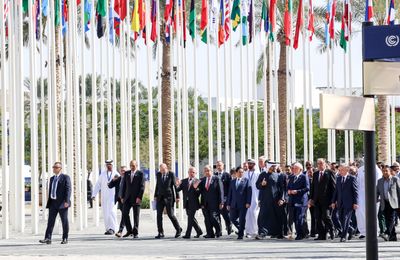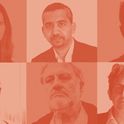On board a boat sailing down Amazonian rivers toward Belém, Wajã Xipai, a young Indigenous man, has an enigma to decipher: “Why did white people separate themselves from Nature, turning Nature into an object to be raped and stripped of commodities?”
At 19, Wajã understands that this arbitrary separation, brought by European colonisers to what they called America, is the structural basis of capitalism. And it is capitalism that is putting humanity at risk of extinction by causing the climate collapse. For Wajã’s ethnic group, as for most Indigenous peoples, animals, plants, fungi, rivers and mountains are also human but with different bodies. There is a horizontal relationship between all these humans, and Nature is nothing other than themselves. This means everyone is kin, be it the river running by their village, the jaguar prowling around it, or the anaconda slithering along the banks. The young Indigenous man eventually concludes: “White people separated themselves from Nature because it’s easier to kill their kin that way, because that way they can even murder their own mother.”
A forest journalist—one who tells stories of the Amazon, of which he is also a part—Wajã was traveling with nearly 100 leaders of Indigenous and other traditional peoples, forest and academic scientists and artists. Organised by two Amazonian NGOs—Sumaúma (of which I am one of the founders) and the Health and Happiness project—the title of the journey was “Voyage to resist the end of the world.” And along the Tapajós and Amazon rivers, the end of the world is above, below, and all around.
On the Tapajós, the river from which the boat departed, women of the Munduruku Indigenous people experience the unspeakable: their bodies condemn their children in utero because of the high mercury contamination caused by illegal gold mining. When they nurse their children, they poison them. Along large parts of the Amazon, where the boat continued its journey, only the banks are green; farther back from the edge lies bare ground, a graveyard of what once was jungle.
Yet even with their wounded bodies, these forest peoples left their territories to fight for progress at COP30. They left one front line to do battle on another, this one in air-conditioned rooms where negotiations transpire without their participation, or with only minimal participation. They are going to fight on the streets of Belém, and so they embarked, forming a flotilla that departed from different points on the map with one same destination: the first climate summit in the Amazon, in a city that has turned its back on river and forest.
Many people have said that these UN climate summits are pointless, but as frustrating and asymmetrical as they may be, were it not for these efforts, repeatedly undermined by lobbyists, we would be entirely at the mercy of fossil fuel, mining, meat, soy and palm oil corporations, and the governments and parliaments that serve them. Indigenous and other traditional peoples know this, which is why they are organising to occupy the city.
Many people have also complained that this COP is being held in Belém, a city with dubious infrastructure. But isn’t it important for negotiators to set foot in an Amazonian state capital, a product of all the colonialism that continues to drive the destruction of the forest today? Wouldn’t it be amazing if they ventured out to Barcarena, in greater Belém, to see how transnational corporations, including the Norwegian aluminium and energy company Norsk Hydro and French mining firm Imerys, have wrought an apocalypse in a setting that just a few decades ago was a paradise? Maybe they could even listen to residents there, who are terrified about the 636 per cent rise in cancer cases from 2000 to 2022. While it is highly unlikely that they will set foot outside the borders of the negotiators’ Blue Zone and the nearby luxury hotels guarded by Brazilian army soldiers, reality will confront them one way or another. Reality is savage and always imposes itself.
The last three COPs were held in petrostates—Egypt, the United Arab Emirates and Azerbaijan—where demonstrations were limited. While Brazil may indeed be considered a petrostate, protests should set the rhythm of this COP’s heart. In the Amazon, we don’t fight as in the Global North. Struggle is celebration and joy is the power to act, and both imagination and dreams are instruments of political action. So in a world where the majority are paralysed with fear and a sense of helplessness in the face of climate and ecosystem collapse, peoples who have not separated themselves from Nature are the ones who keep our planet’s biomes alive.
As young Wajã has shown, forest peoples have brought to Belém another understanding of the world and their place in it, a perspective that led their ancestors not to destroy the Amazon but to plant part of it instead. What technological invention is more extraordinary than a rainforest? Their way of living in our planet-house will be present at COP30 as at no other before. And since their lead role has not been recognised at the negotiation table, Indigenous people will forge a role for themselves on the streets.
This COP is a crucial opportunity to halt global heating and may be the last chance to avoid some of its terrible effects. In his speech at the leaders’ summit, which preceded the opening of COP30, Luiz Inácio Lula da Silva, Brazil’s president, defended a roadmap for transitioning away from fossil fuels. But 21 days before the start of the event, Lula greenlighted a new oil exploration frontier in the Amazon.
Drilling has already begun, and “contradiction” has become the Brazilian president’s middle name, weakening his position as host.
In the same speech, Lula also cited the Yanomami people, whose shamans “hold up the sky so it doesn’t fall”, but who are now dying because white people have invaded their lands in search of gold, while transmitting disease and contaminating water and land. One of the key leaders of this people is Ehuana Yaira Yanomami. When her fourth child was born, she was in the city, caring for another child of hers, who was ill. When the time came, the idea of a hospital delivery seemed frightening to her. She left her sick daughter for a moment, found a surviving tree, and gave birth clinging to its trunk. For a Yanomami woman, a tree is needed for a child to be born. The depth of this relationship—erased by centuries of separation from Nature on the part of a human population infected by capitalism—is what can illuminate COP30. Or, as Indigenous people prefer to put it: teach white people to see in the dark.
The forest is going to speak. We will only live if we listen to her.
(Translated into English by Diane Whitty)













